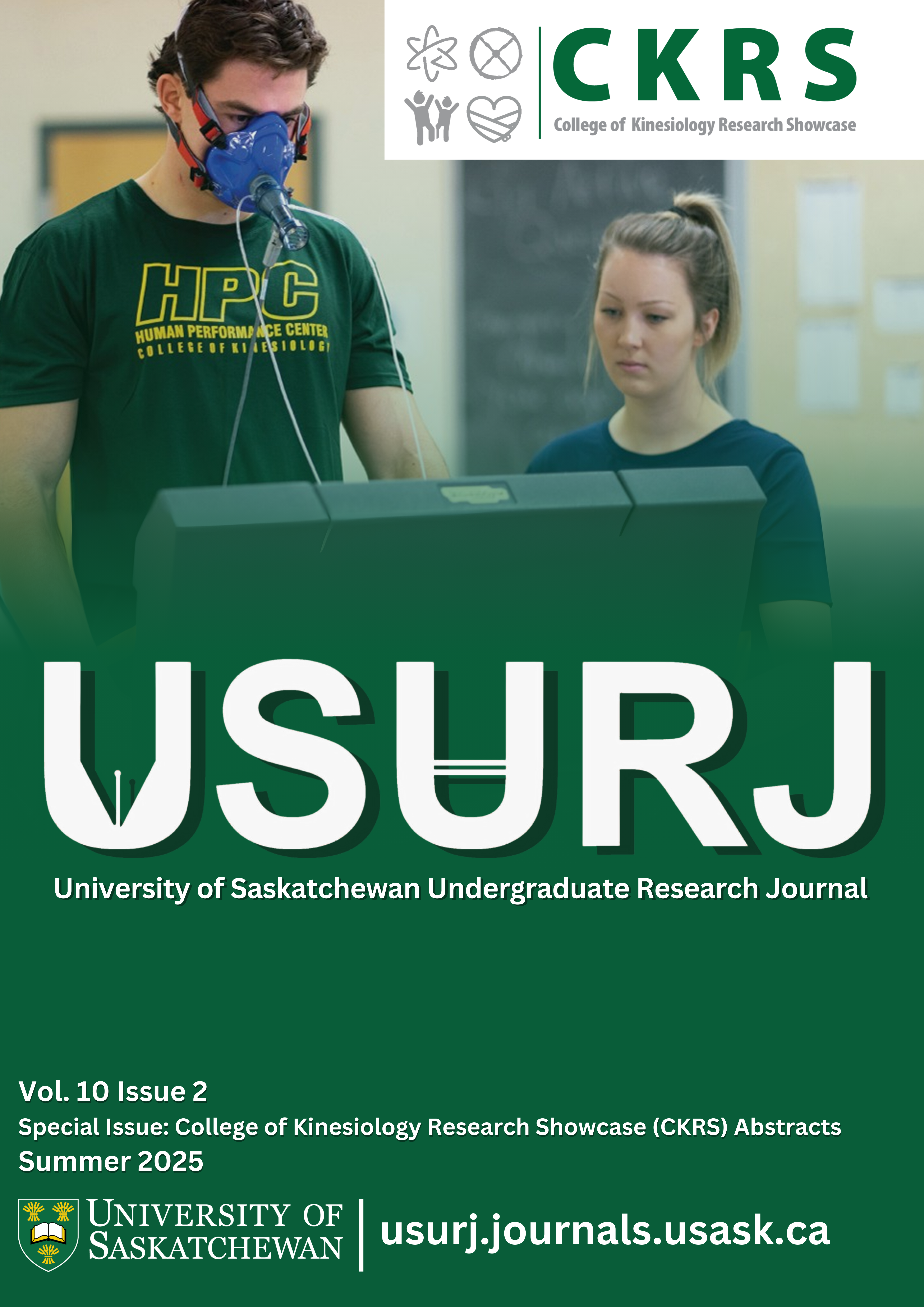Effect of Post-Exercise Dry Cupping Therapy on Muscle Recovery
Main Article Content
Abstract
College of Kinesiology Research Theme: Human Performance
Introduction: Dry cupping therapy has gained popularity in athletic settings as a recovery modality, yet empirical evidence supporting its effectiveness remains limited. The practice involves using suction to create negative pressure on the skin, which is theorized to promote blood flow and tissue recovery.
Purpose: To determine whether post-exercise dry cupping therapy would improve recovery of muscle strength, reduce muscle soreness, and limit swelling compared to a sham control arm.
Methods: Ten resistance-trained adults (aged 20-22) participated in a randomized, within-subject, blinded trial. Participants performed a biceps-focused muscle-damaging exercise. One arm received dry cupping therapy post-exercise, while the opposite arm received a sham cupping treatment (cups applied with no suction). Assessments were conducted at six time points: pre-exercise, post-exercise, post-cupping, and 24, 48, and 72 hours post-exercise. Outcomes included muscle strength (isometric torque via Biodex), muscle thickness (ultrasound), and soreness (Visual Analog Scale). Differences were analyzed using repeated-measures ANOVA to assess arm × time interactions and time main effects.
Results: There were no significant arm × time interactions for any outcome, indicating similar recovery patterns between cupped and control arms. Significant time main effects were observed for all outcomes (p < 0.01). Muscle strength decreased post-exercise and remained below baseline at 24, 48, and 72 hours (p < 0.05). Muscle thickness increased post-exercise and remained elevated at 24 and 48 hours before returning to baseline by 72 hours (p < 0.05). Muscle soreness increased post-exercise and remained elevated at all follow-up time points (p < 0.05).
Conclusion: Dry cupping therapy applied after resistance exercise did not significantly improve recovery of strength, soreness, or swelling compared to the control, who received sham treatment. These findings suggest that cupping may not provide additional recovery benefits beyond placebo.
Downloads
Article Details
Section
Articles: USURJ’s current Publication Agreements apply a Creative Commons Attribution-NonCommercial License (CC-BY-NC) by default. The CC BY-NC license lets others remix, tweak, and build upon work non-commercially. The author(s) can choose a different CC license, as outlined in https://creativecommons.org/about/cclicenses/. Please see the PDF for each article to determine what license is applied to that article. Author(s) can also request to reserve all copyright (All Rights Reserved). If there is no indication for articles published before September 2020, assume the author retains all rights beyond those necessary for publication by USURJ. All articles published after September 2020 will apply one of the aforementioned CC licenses. See the Publication Agreement under the Submission Preparation Checklist or Author Guidelines for more information. Artwork: All copyright for the original artwork remains with the artist unless they wish to apply a Creative Commons (CC) license to the artwork. Please see the PDF for each artwork to determine what license is applied to that artwork.
